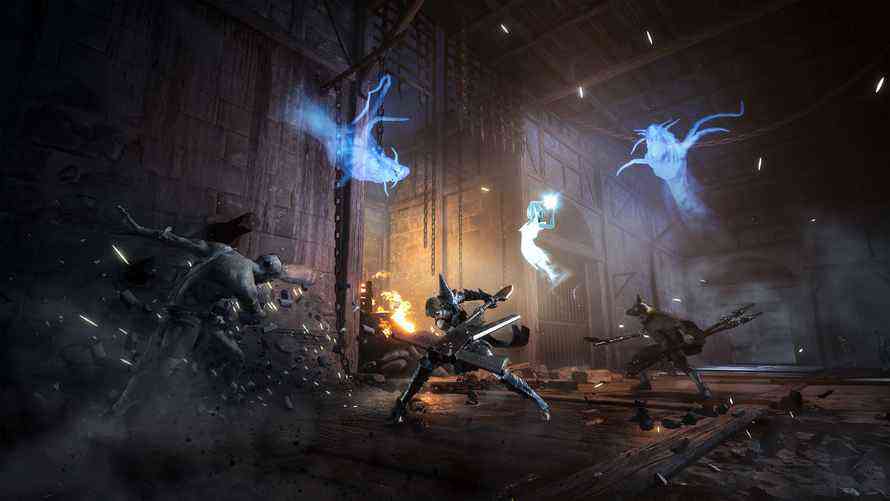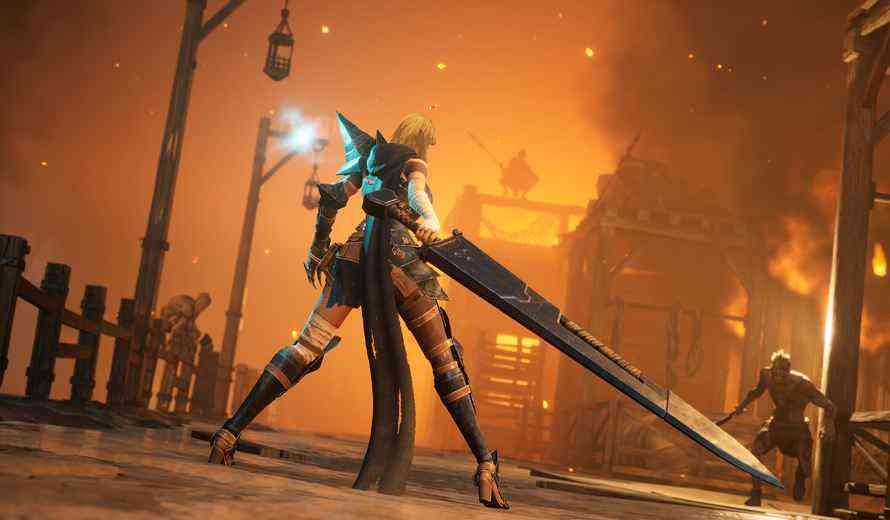Soulstice Preview
Title aside, Reply Game Studios’ new action RPG is not a Soulslike. Sure, it has fast-paced combat using a wide range of offensive and defensive moves. However, Soulstice is defined by its core mechanic of two connected sisters and the synthesis of their abilities. We had the chance to sit down and play a dozen or so missions, around 25% of the final game. While we previewed the game in June, this showed a bit more of what the upcoming title has to offer.
1. Sister Act
While the player primarily controls a character named Briar, her literal spirit sister Lute has a number of important abilities as well. Briar and Lute together are a Chimera, a special union of souls. The Chimera have been created to battle supernatural Wraiths. Wraiths take many forms and have corrupted the population, turning them into monsters.
The sisters explore the sprawling, corrupted city of Ilden and discover clues about the origin and purpose of the Wraiths and the evil forces controlling them. Soulstice explores the relationship between Briar and Lute, and how Lute sacrificed herself to form the Chimera with Briar. The sisters explore and fight while their conversations inform the narrative. Their dialog also gives players clues about where to go, what to do, and how to fight.
2. May the Devil Cry?
Combat is the heart of Soulstice, and where its more interesting mechanics live. Briar flights with conventional weapons like swords, axes and hammers. She has regular and heavy attacks as well as a range of combos that add power and flexibility to her moves. If Soulstice was just Briar fighting alone, though, it would be a clone of many other games.

In contrast, Lute uses magic, both offensively and passively or defensively. She can trap enemies in a force field to make them easier to fight and reveal hidden paths. She also has a second magic ability that allows Briar to harvest valuable crystals that power her spells. During combat, the pair’s unity level rises, which opens up additional special attacks and allows Lute to hold magic auras longer.
Similar to Devil May Cry, the player’s performance is ranked at the end of battles, with higher scores earning more points to spend on upgrades. Likewise, there is an overall mission rating, which is partly based on how long it took to finish the mission. In a game without a map and occasional lack of clarity about which direction to go, punishing the player for taking too long seems unfair. It certainly doesn’t encourage exploration.
However, there are reasons to poke around the edges of levels. For one thing, there are magical challenge portals. These one-off, optional battles take place in arenas in another dimension and are great ways to grind XP.
3. The Sisters Grim
One aspect of Soulstice that does suggest a FromSoftware game is the art direction. Much of the game takes place on the decrepit docks and in the dungeon-like halls of Ilden. I was reminded of Dishonored, Bloodborne, and several other grimdark fantasy games. Everything is grey and brown save for the dancing flames of burning rubble. There’s a lot of goth set dressing and plenty of crates and barrels to smash for hidden coin. Likewise, the enemies range from possessed humans turned demon to more seriously threatening monsters spawning out of another dimension. Briar and Lute themselves have a stylized look that edges towards JRPG-anime.
Briar’s movement through the world is mechanically similar to other action titles. She can walk, run, dodge, jump, and double jump. Soulstice has a lot of platforming but it’s pretty forgiving and doesn’t require precise timing. It is, however, hampered by the game’s camera.

4. Lights, Camera… and a Little Frustration
When I played the early demo, I noted that the game’s fixed view camera had some issues. For one, it made for some weird angles and visual obstructions when exploring an area. It often zooms so far out that Briar is nearly invisible against the similarly colored background. Sometimes this means the camera is far from optimal in platforming sections.
I guess I’ve played so many action RPGs that I’ve come to expect a moveable camera. But I can see the logic of the decision here. The fixed camera angle and invisible walls help keep Briar on the main path, which is useful when there’s no minimap. There’s a little more camera flexibility in combat, and enemies offscreen and outside the camera view are noted by directional arrows.
5. It’s Getting Close to Release
Outside of Briar, Lute, Layton (the merchant), and a few NPCs, there isn’t a ton of voice work in Soulstice. That said, what’s there is well done. The overall sound environmental sound design is solid and the music is atmospheric and understated.
There are probably too many Soulslike action games, so a game that takes a chance with another direction is, if nothing else, refreshing. A few months since I last looked at Soulstice, I still like the combat and basic premise. I appreciate the art and level design, but the camera still feels more like an enemy than an ally. The battle ranking system seems a bit incongruous, given the overall tone of the game. All in all, I’m still very much looking forward to playing through Soulstice next month when we get the final release.
Thank you for keeping it locked on COGconnected.

